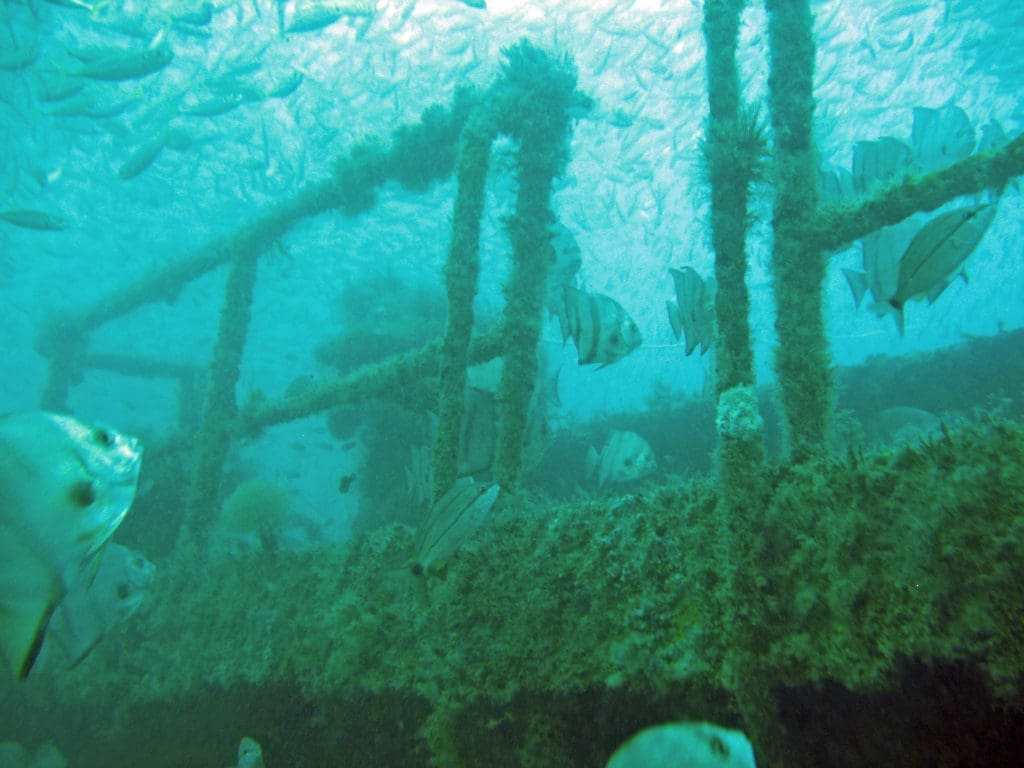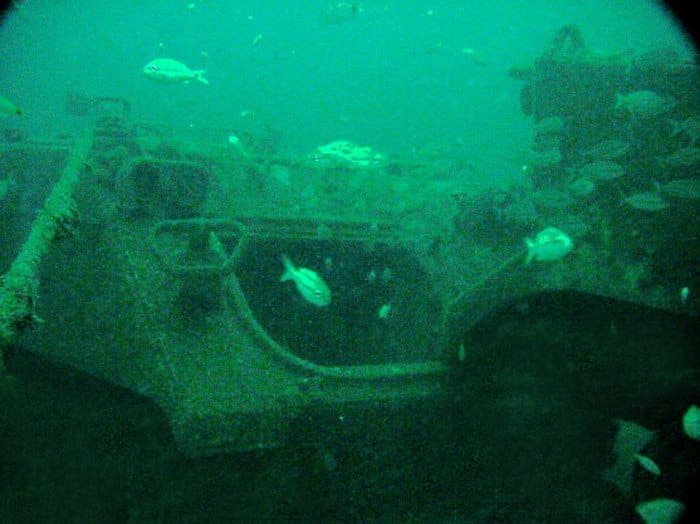Making The Sea Bountiful
Artificial Reefs & Memorial Fishing Grounds
Early 1980s, it was. We put out to sink a ship. Waves tossed us about as we headed seaward to document the sinking of a Liberty ship. Seems it was the 440-foot long Betsy Ross. In World War II, America’s Merchant Marines helped the Allies win World War II by shipping supplies to dangerous fronts. They called their vessels Liberty ships. Over the years a number of Liberty ships have been sunk to create artificial reefs.
The Betsy Ross became “structure,” giving assorted marine species shelter and a place to build a beneficial community. In time, billfish and big game species congregated near the artificial reef.
Radios crackled, people quieted, and the countdown began. The gray vessel, cleaned of pollutants, awaited the detonations that would send it into the sea. Beside me stood a seasick Associated Press photographer. He shoved his 35 mm SLR at me. “Fire off a few shots.”
He dropped to the deck and curled around a capstan. I fired off a few shots and filmed the sinking with a Bolex 16 mm camera. Explosions rocked the Liberty ship and down she went. Since that sinking, reef building off the South Carolina coast has accomplished much.
Consider the “Charleston Deep Reef” some 52 nautical miles southeast of Charleston Harbor. This reef, the state’s first Type II Marine Protected Area, prohibits bottom fishing for snapper or grouper but allows surface trolling for species such as billfish or dolphin. Private donations help support the Charleston Deep Reef project as part of SCDNR’s Artificial Reef Program and the Harry Hampton Memorial Wildlife Fund manages those contributions via the South Carolina Memorial Reef Project.
The first significant contribution to the Charleston Deep Reef project was not a ship. Materials deployed included truck chassis, shipping containers, radio antennas, and an old Highway 41 steel swing bridge. The reef’s structures attract marine growth almost immediately, followed by baitfish and bottom dwellers. These new residents attract pelagic species, popular game for offshore sport fishermen and women.
The newest addition to the reef is the 247’ M/V Coastal Venture, deployed in June, 2022. The vessel’s three storage holds alone provide 85,200 cubic feet of habitat for marine life.
America sang “The ocean is a desert with its life underground and a perfect disguise above,” a memorable metaphor if a tad upside down. Envision a stretch of barren sea bottom as a desert. Dropping structure gives all types of organisms a place to attach and build homes. Another way to look at it is to imagine greenhouses splashing bursts of life across a desert floor. A wide variety of organisms colonize structure, species such as algae, barnacles, corals, sponges, hydroids, bryozoans, and marine worms. They quickly create the foundation for a reef community and food web. A barren area soon hosts a thriving ecosystem.
The South Carolina Memorial Reef memorializes men and women no longer with us who shared a love for South Carolina’s great sportfishing resources. Innovative projects, collaborations, and funds from donors enable this reef and others to provide critical habitat for vulnerable deepwater species while attracting billfish. It’s the only deep-water artificial reef on the US Atlantic Coast with special management enforcement, the first of its kind.
Among the many tax deductible projects the Harry Hampton Wildlife Fund supports and funds are the Bruce Rush Artificial Reef and the South Carolina Memorial Reef Program. Memorials to those who loved billfishing helps sustain important saltwater species and enrich deep sea fishing opportunities.
The day I filmed the sinking of the Liberty ship, I took Dramamine, and it worked. And artificial reefs work. Out of sight, out of mind doesn’t apply to old ships, bridges, and other structures. True, they’re out of sight but abundant life results from the structure they provide. To see a blue marlin leaping and flashing cobalt-silver is a scene reminiscent of an Ernest Hemingway saga. Man and the sea. They enjoy a relationship in many ways, among them, artificial reefs.









